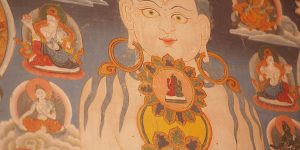Learning from the Teachers Video 1: Four students ask Zasep Rinpoche meditation questions — resting the mind in a natural way in Mahamudra; foundation practices; being your own Guru, and meditative “realizations.”
 In the first of a new Buddha Weekly Series, Learning from the Teachers videos, four students, during a teaching on “Foundation Practices” ask various important questions about meditation.
In the first of a new Buddha Weekly Series, Learning from the Teachers videos, four students, during a teaching on “Foundation Practices” ask various important questions about meditation.
Question 1: How can you tell the difference between subtle dull mind, course dull mind and calm mind in meditation?
Question 2: In the beginning stages of meditation, is it alright to guide your session with contemplation topics — to steer your meditation, like being your own guru?
Question 3: Is it alright, in one meditation session, to do a session on Samatha as well as Vipassana both?
Question 4: What sort of realizations can you develop from deity practices, if you have not yet completed your foundation practices?
Answered by Venerable Acharya Zasep Tulku Rinpoche. [Note, even though the questions were in a teaching session on “Foundation Practices” three of the questions focused on advanced Mahamudra meditation.][Biography and schedule of 2017 teachings below transcript.]
15 minute video (from a full day session): 4 questions answered.
[Video Transcript below video.]
Excerpt from Answers: “When you meditate … You see your mind is rushing down, like a river coming down from the mountains of the Himalayas. Rushing down. Strong mind… Then, at some point you see your mind, the same river, like the Ganges river, but now it is flowing down into the Indian plains. Not rushing, just moving. Strongly, and smoothly moving … Then, you see your mind is now merging with the great ocean… all gone into the ocean, becoming one taste. Likewise, when you experience Mahamudra, you experience Emptiness. Clear light and bliss. There is no Samsaric mind.”
Transcript
Zasep Rinpoche: “If you have any questions, most welcome.”
Student 1: “How can you tell subtle dull mind. The coarse dullness I can understand. How can you tell if it’s subtle dullness?”
Answer, Zasep Rinpoche: “It’s hard sometimes. It’s hard to tell. As I said, it is easily confused with calm mind. So, you have to observe. When you mind becomes calm, and your body relaxed, you have to observe. You have to see, is there clarity with your meditation? With your object of meditation. [i.e. breathing, visualization, etc.] Say, a visualization; is it still clear, or not?
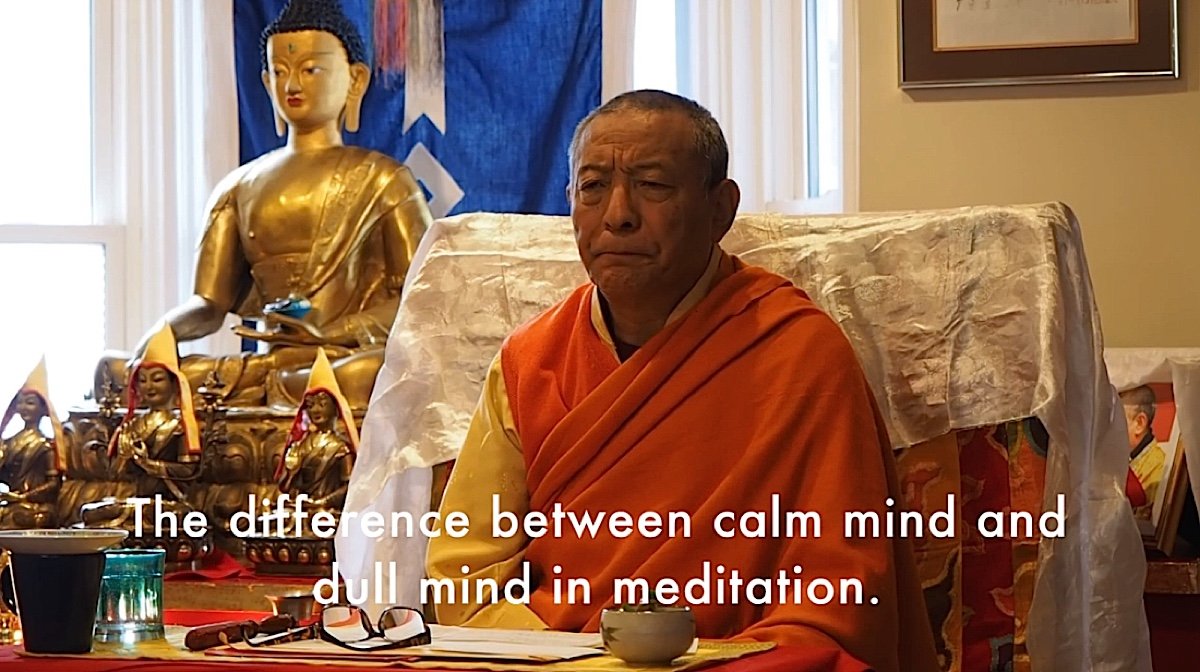
“If you had focused mind on the prana, breath — can you feel your breath? Inhale. Exhale. Can you feel your abdomen, rising, falling, and so on. You have to apply alertness. Slowly, you will notice, you will know if it’s subtle dullness.”
Student 1: “Just a follow up, Rinpoche, if you’re doing Mahamudra, Samatha, say your mind becomes quiet, not generating many thoughts, and your breathing is very shallow, how do you know you have clarity of awareness in that instance? I don’t know if I’m explaining it properly. Your mind doesn’t seem to want to generate thoughts but sometimes I don’t know if there are thoughts going on underneath? The feeling isn’t really a blissful feeling, it’s just a neutral feeling. Is that subtle dullness?”
Answer, Zasep Rinpoche: “No, I don’t think so.
You’re experience calm mind, experiencing that very moment. Calm mind, gentle mind, and peaceful, and no thoughts coming by or going by. We talk about, during Mahamudra meditation, we talk about no pulling, no pushing, no rejections, no acceptance. And you don’t follow the previous thoughts, and you don’t expect future thoughts. Just be in the moment. We call it “the gap.” [Gestures with two hands showing a space.]
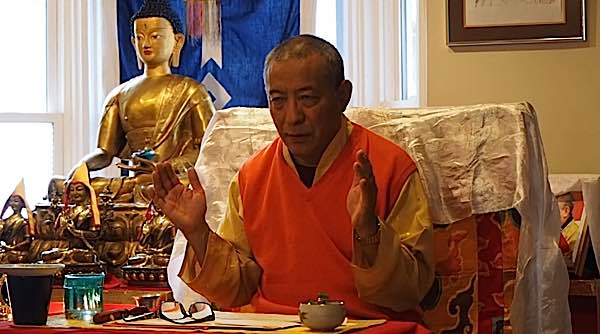
“If you are there, in that gap, that’s okay. There’s no need to be concerned about subtle dullness. Because, then that itself is a thought. When we do Mahamudra medtiations, we don’t generate thoughts. We don’t expect. We don’t try to bring something. Or get rid of something.
“We call it ‘resting the mind in the natural state.’ Mahamudra. It’s approach is different. There are different kinds of Samatha practice. Resting the mind in a natural way means ‘have a break’ — not to go to the past, don’t go to the future, just be here now. Resting the mind in the present moment.
“The reason we call it ‘resting mind’ is because the mind becomes so busy, right? Restless. Here, we are resting. Not rushing anywhere. No expectations. Resting the mind in a natural way.”
Student 2: “Is it okay in the beginning stages of meditation practice to use contemplation, to sort of steer your meditation? Almost as if you’re sort of coaching yourself at your own cushion. Or does that become too much of an obstacle?
Zasep Rinpoche: What type of practice are you talking about?
Student 2: “When I’m trying beginning Mahamudra I’ll be sort of coaching myself in the doctrine of Mahamudra, so then I’m sort of teaching myself as I’m sitting there? Reminding myself.
Answer, Zasep Rinpoche: “Yes. Sure, you have to coach yourself. You have to be kind of your own coach. You have to become your own guide. In other words, you have to become your own guru. You have to remind yourself. You have to say, ‘okay, I’m following Tilopa’s instructions for Mahamudra. Or following Marpa’s instructions for Mahamudra. Or following Lama Tsongkhapa’s instructions. Think, ‘this is what I’m doing. I have to practice this way.’
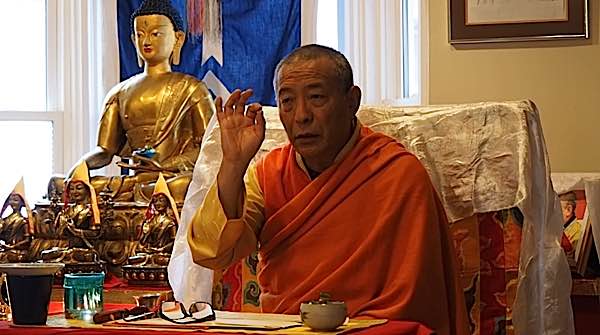
“You have to follow the footsteps of Mahamudra. You have to coach yourself. That’s why we sing those, what we call ‘Doha.’ Doha is a poem, written by a famous Indian Mahasiddha, Saraha. Saraha Doha are poems. [Sarahapa, Sarahapada, the “arrow shooter”] Poems of Mahamudra. Also, Milarepa’s song of Mahamudra. Tilopa’s song of Mahamudra. Tilopa was a famous Indian masters, one of the most celebrated Indian teacher. Tilopa’s song of Mahamudra.
“When you meditate on Mahamudra, you see your mind. You see your mind is rushing down, like a river coming down from the mountains of the Himalayas. Rushing down. Strong mind. You see it happening. Then, at some point you see your mind, the same river, like the Ganges river, but now it is flowing down into the Indian plains. Not rushing, just moving. Strongly, and smoothly moving. You see your mind. Then, keep observing your mind, slowly moving, slowling moving. Then, you see your mind is now merging with the great ocean. From the Bay of Bengal. Now, your mind has become one with the big ocean. One taste. Salty water. One water. There’s no different water. The Ganges River, the Yangtze River, Yellow River, Indus River, Mekong River, all gone into the ocean, becoming one taste. Likewise, when you experience Mahamudra, you experience Emptiness. Clear light and bliss. There is no Samsaric mind.
“So, these are the gist of the poems. Tilopa’s song. Kind of like that, you have to remind yourself, you have to coach yourself. If you are going a little bit off track, or something. If your mind is experience sleepy or dull mind, or irritated, or restless, put it back on track, by thinking about those Doha and songs. It is very helpful. Think, I am so fortunate that I can practice now. I’m following in the footsteps of Buddha and all those great masters.”
Student 3: “Rinpoche, speaking of Mahamudra, do you recommend practicing the Mahamudra Samatha instructions, or attempting them, for a period of time, before Vipassana instructions? Or can you do it in the same session?”
Answer Zasep Rinpoche: “You, shouldn’t do it in the same session. See, right now we’re really talking about foundation practices: refuge, guru yoga, prostration and so forth. For Mahamudra practice, you also need these foundation practices.
In Nyingma tradition they speak about Dzogchen. Dzogchen also needs foundation practice. Without foundation practices, Mahamudra does not work. Oh, it temporarily works. In Dzogchen practice, one will not have authentic realization without foundation practice. One could have a small realization.
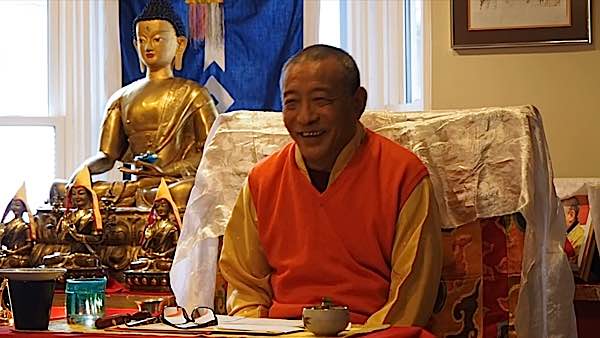
In Dzogchen practice, one will not have authentic realization without foundation practice. One could have a small realization. Some experience. Like a taste. Like tasting food. Tasting wine. Then, that’s it. Partial, or little realizations, here and there.
So, no, you can’t have complete authentic realizations. That’s why foundation practices for Mahamudra. When you read the commentaries on Mahamudra, according to Gelug tradition, and according to Kagyu tradition — first, foundation practice. You’ll have a commentary, one book, and seventy pages will be all about foundation practices, the last twenty-five pages is the Mahamudra.
Yes, your question is a good question. First you do Samatha Mahamudra meditation. Then when you get experience, when you get good experiences, then you do Vipassana. Once you have realizations within Vipassana Mahamudra, then you can move on to Tantric Mahamudra.

So, first you do Samatha Mahamudra. It’s very important. Calm, abiding mind. Being in the present. Observing your consciousness. Observing the mind. Observe the reactions. Until all the reactions are gone, or subsiding. See your mind like a mirror. A mirror only reflects. Mirror does not act or react. You can look in the mirror ten times a day. Never react, only reflecting. You are the one who is reacting, seeing your reflection. Oh, I have one more wrinkle. One more grey hair! (laughs). It’s just reflecting. That’s like Samatha Mahamudra. The most important practice.”
Student 4: “Based on your response, can you realize other practices without foundation? So, can you realize Black Manjushri if you have the initiation? Can you really get the full realization of that practice if you haven’t completed your foundation practices?
Answer Zasep Rinpoche: “That depends on what kind of realizes of Manjushri you expecting to experience. Let’s put it this way, without the foundation practice, let’s say next week you go and take Black Manjushri initiation, then you go through the sadhana practice, then what? What do I obtain from this? What is the benefit?
As I mentioned this morning, there are lots of benefits. The most important is to practice without doubt. You have to have trust, commitment and faith. If you do that practice, the visualization and mantras, it is very powerful. It works. There’s a realization.
Now, it depends on your definition of what a realization is. If we’re talking about benefit, then, the benefit for the practice is cultivating divine pride — it helps you have divine pride. It also is healing. Does it work, yes, it works.
For example, I’ll tell you a story. Last year, one person came to me and he said to me, “I’ve discovered I have prostrate cancer.” Right away, I gave him Black Manjushri mantra, no initiation. I gave him the lung of the mantra. I told him to do the sadhana, do the mantra. Then, he went back to his home, back to Australia, and he did the surgery. And the surgery was successful.
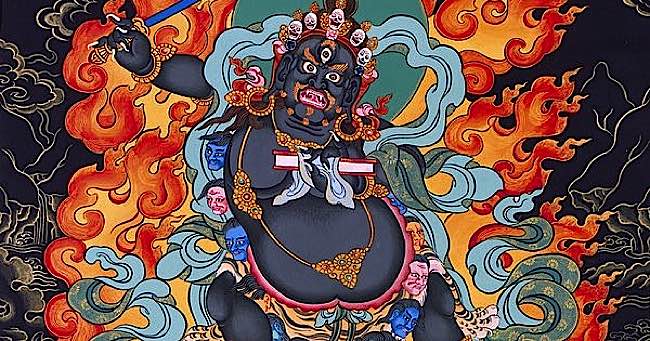
He felt that throughout this, Manjushri, Black Manjushri was with him. It made a huge difference for him in overcoming fear and gave him strength, and gave a lot of energy. At some point the doctors said, “Your cancer is completely clear.” No more returning — at this point, anyway. Don’t know the future, but now. So, he thanked me for giving him Black Manjushri mantra and asked me this next summer when I come “Please give me the initiation.”
So, anyway, the healing benefit is there. Now, also Black Manjushri practice is very good for making determinations, clear mind, focus, cut through. Yes, there is a benefit there.
But, if you’re talking about something a little more, for example, realization on, say, ultimate tantric realizations — like generation stage, completion stage, clear light and bliss — through the practice of Black Manjushri, then, yes, you need foundation practices. Otherwise, it’s not easy.
TEACHING SCHEDULE OF ZASEP TULKU RINPOCHE
Mongolia

ABOUT VENERABLE ZASEP TULKU RINPOCHE
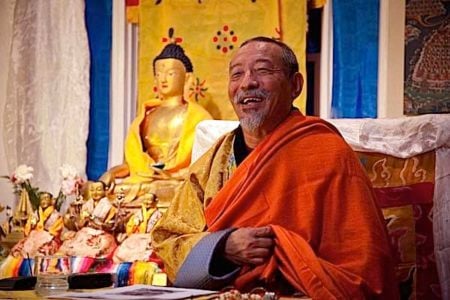 Rinpoche is popularly known for his approachable teaching style, strong humor and teachings based on a long lineage of great lamas. His own gurus included the most celebrated of Gelug teachers: His Holiness Kyabje Trijang Rinpoche, His Holiness Kyabje Ling Rinpoche, Venerable Geshe Thupten Wanggyel, His Holiness Kyabje Zong Rinpoche, Venerable Lati Rinpoche, Venerable Tara Tulku Rinpoche and Venerable Khalkha Jetsun Dampa Rinpoche.
Rinpoche is popularly known for his approachable teaching style, strong humor and teachings based on a long lineage of great lamas. His own gurus included the most celebrated of Gelug teachers: His Holiness Kyabje Trijang Rinpoche, His Holiness Kyabje Ling Rinpoche, Venerable Geshe Thupten Wanggyel, His Holiness Kyabje Zong Rinpoche, Venerable Lati Rinpoche, Venerable Tara Tulku Rinpoche and Venerable Khalkha Jetsun Dampa Rinpoche.
Rinpoche is spiritual director of many temples, meditation centres and retreat centres in Australia, the United States and Canada. He was first invited to teach in Australia by Lama Thubten Yeshe in 1976.
More on Zasep Tulku Rinpoche>>
Gaden for the West Meditation Centres
Australia
- Vajra Ling, Uralla, N.S.W.
- Losang Gyalwa Mandala, Sydney, N.S.W.
- Tenzing Ling Centre, Quamaa, N.S.W.
- Dorje Ling Retreat Centre, Lorina Valley, Tasmania
Canada
- Chittamani Mahayana Buddhist Meditation Centre, Ottawa, Ontario
- Gaden Choling, Toronto, Ontario
- Medicine Buddha Centre, Calgary, Alberta
- Potala Tibetan Buddhist Meditation Centre, Thunder Bay,Ontario
- Tashi Choling, Nelson, B. C.
- Zuru Ling Society, Vancouver, B.C.
United States
- Golden Blue Lotus Tara Meditation Center, Moscow, Idaho
- TsongKhapa Center, Kalamazoo, Michigan
- Vajrayogini Center, Seattle, Washington
More articles by this author

Interview with Venerable Robina Courtin: “Staying sane in a crazy world”, taking the clichés out of karma and practicing the Three Precious Trainings

Video: Vipashyana Mahamudra (Vipassana) short teaching on Madyamuka and brief guided meditation with H. E. Zasep Tulku Rinpoche

Shakyamuni Mantra video — chant these Holy sounds to bring in a prosperous lunar new year. Happy Year of the Earth Dog!

Video Teaching: Amitabha Amitayus Powa teaching and guided meditation — transfering consciousness to the Pureland when dying or as a practice for “healing the mind.”
Search
Latest Features
Please support the "Spread the Dharma" mission as one of our heroic Dharma Supporting Members, or with a one-time donation.
Please Help Support the “Spread the Dharma” Mission!

Be a part of the noble mission as a supporting member or a patron, or a volunteer contributor of content.
The power of Dharma to help sentient beings, in part, lies in ensuring access to Buddha’s precious Dharma — the mission of Buddha Weekly. We can’t do it without you!
A non-profit association since 2007, Buddha Weekly published many feature articles, videos, and, podcasts. Please consider supporting the mission to preserve and “Spread the Dharma." Your support as either a patron or a supporting member helps defray the high costs of producing quality Dharma content. Thank you! Learn more here, or become one of our super karma heroes on Patreon.
Lee Kane
Author | Buddha Weekly
Lee Kane is the editor of Buddha Weekly, since 2007. His main focuses as a writer are mindfulness techniques, meditation, Dharma and Sutra commentaries, Buddhist practices, international perspectives and traditions, Vajrayana, Mahayana, Zen. He also covers various events.
Lee also contributes as a writer to various other online magazines and blogs.






